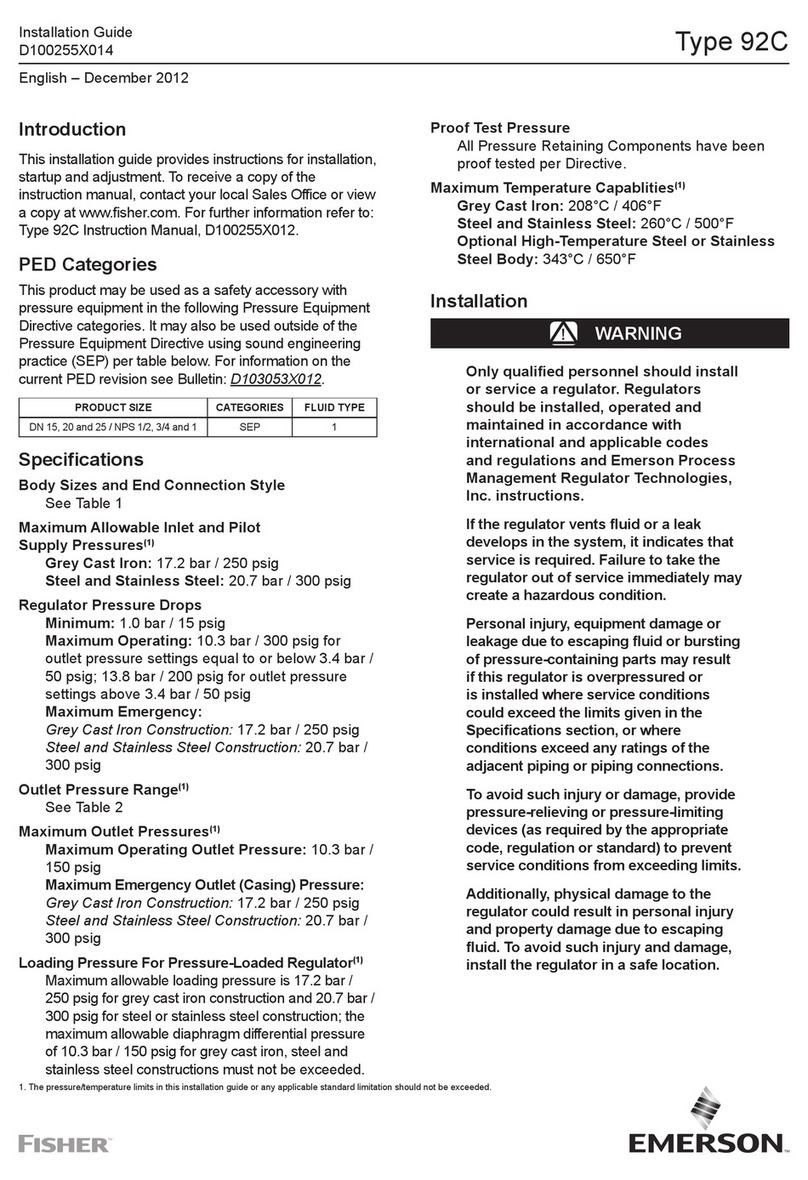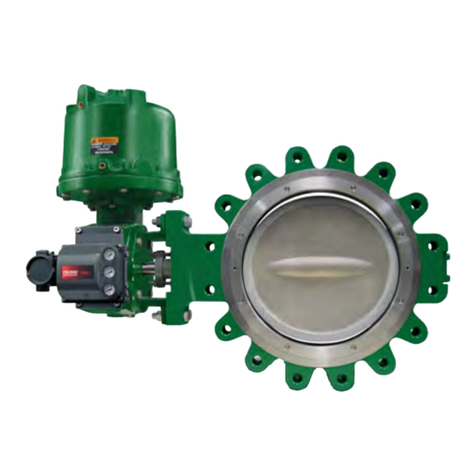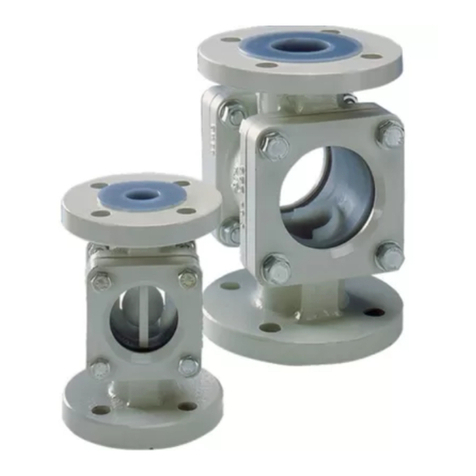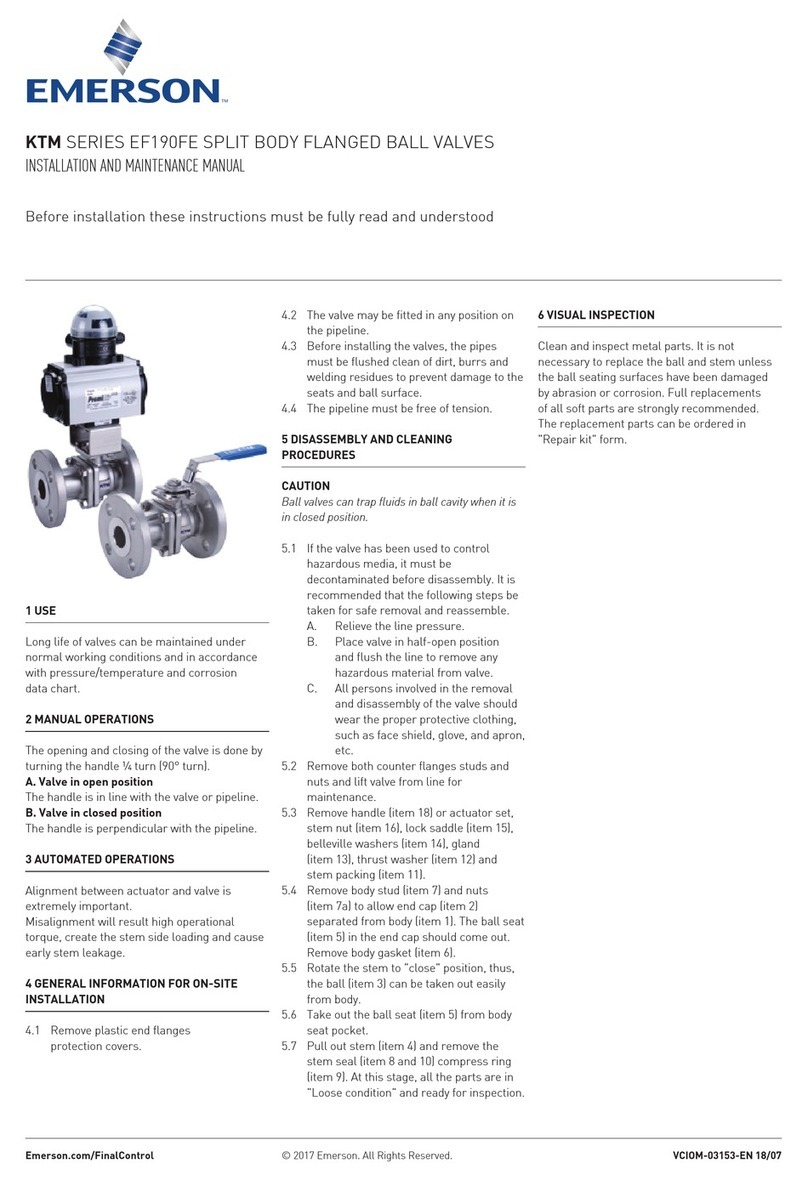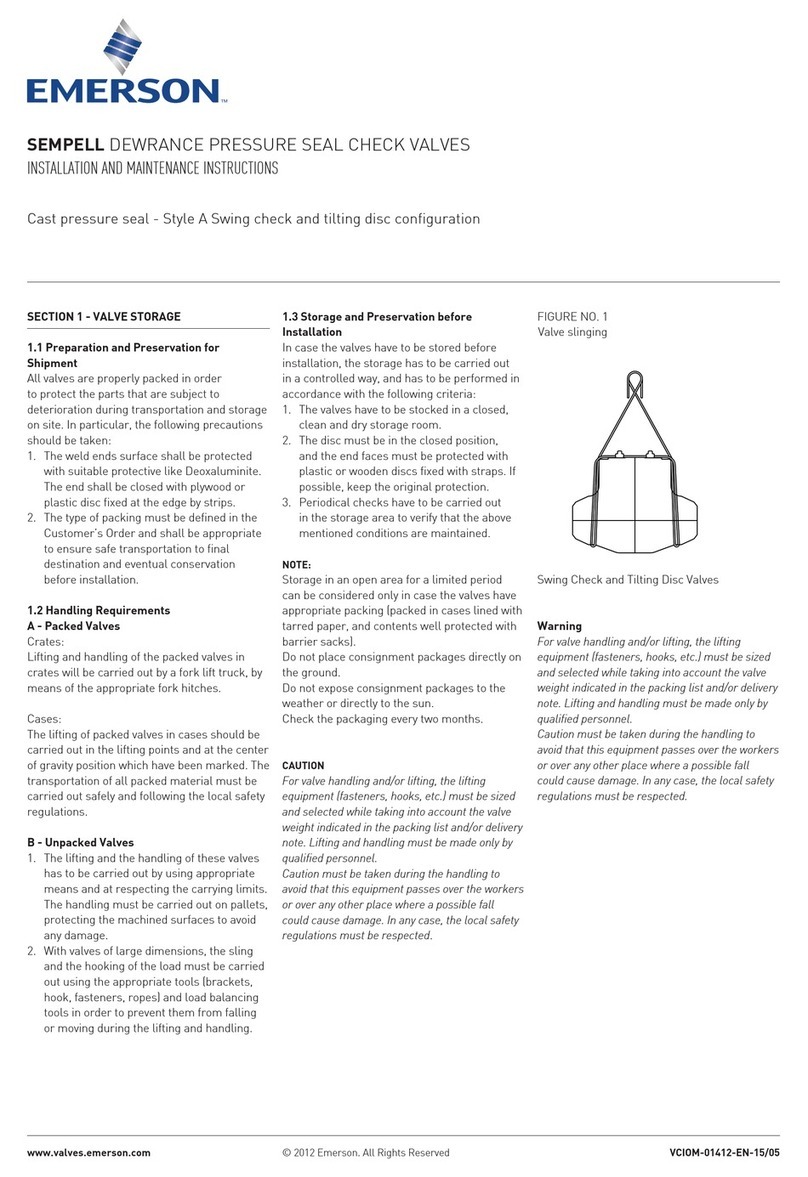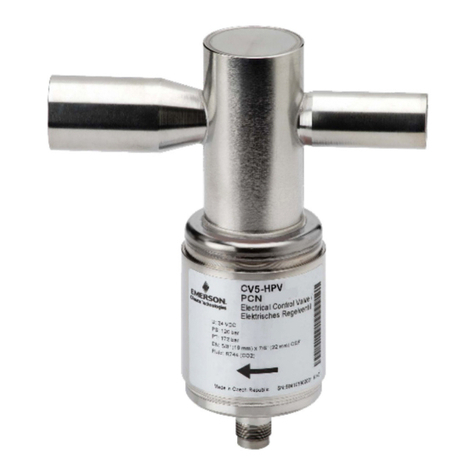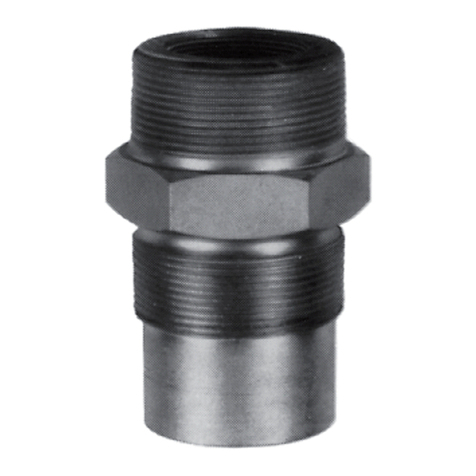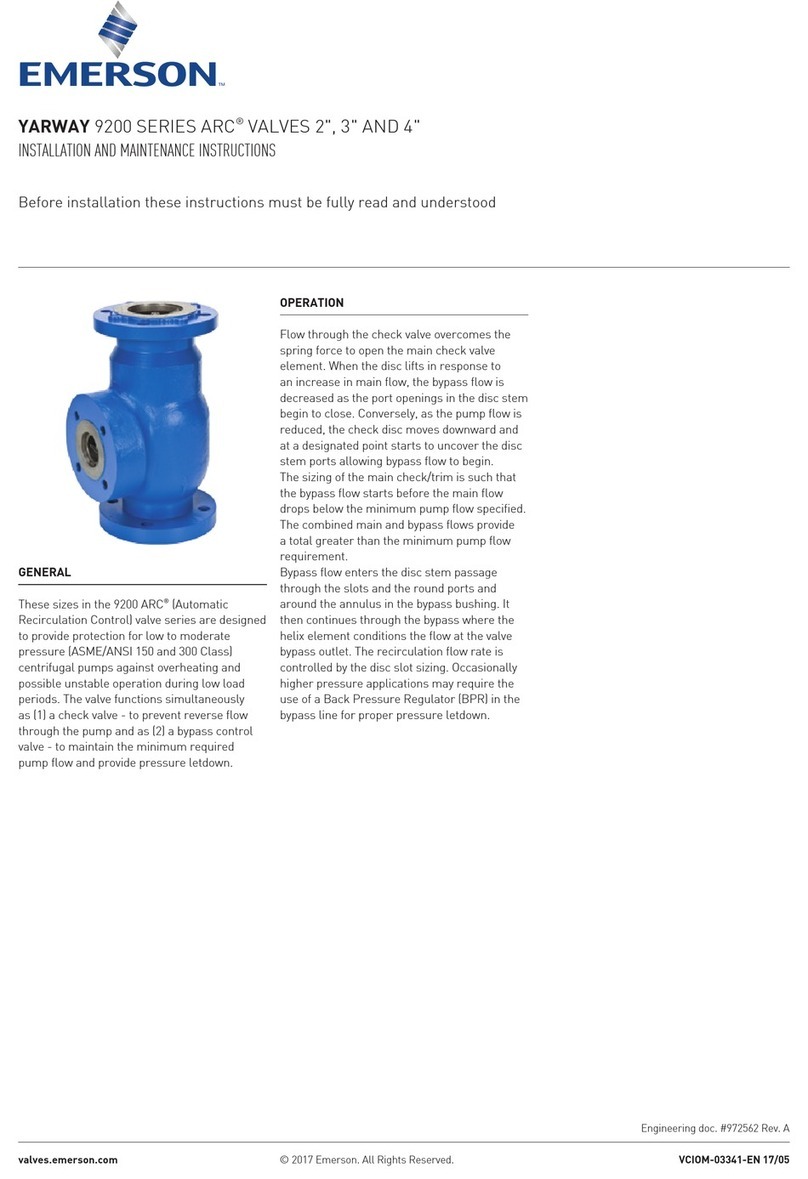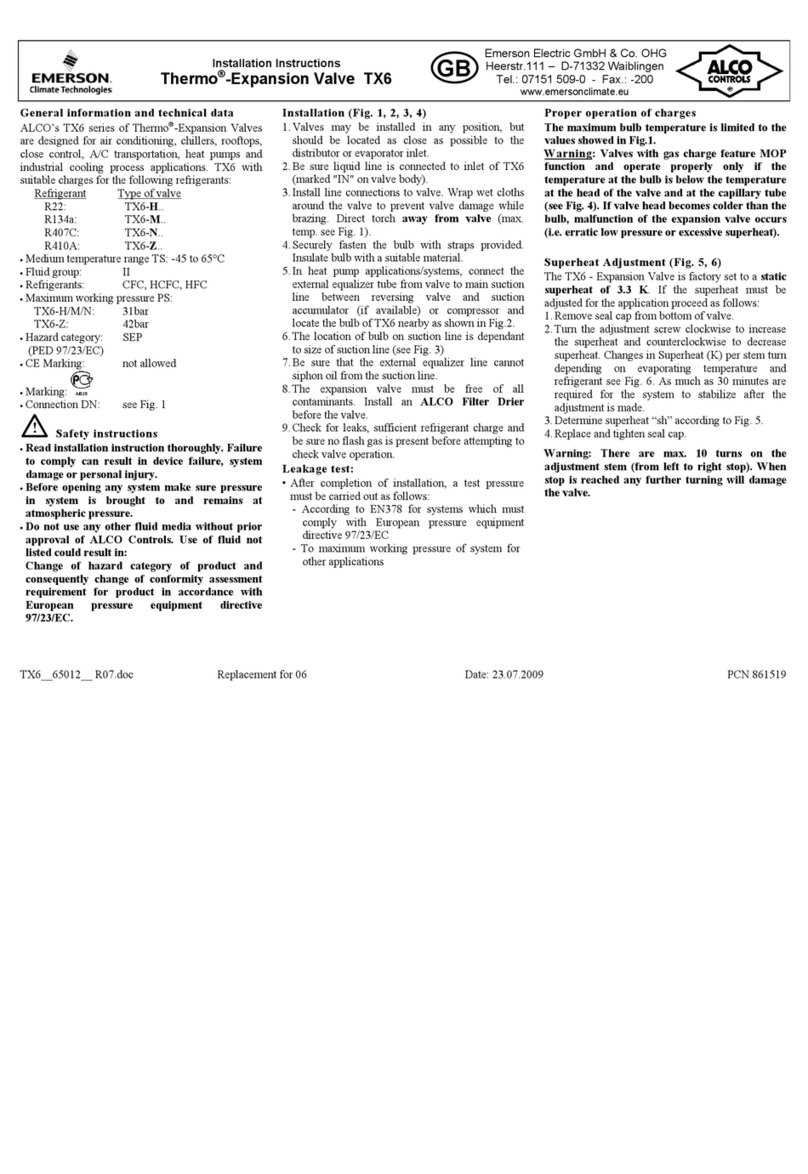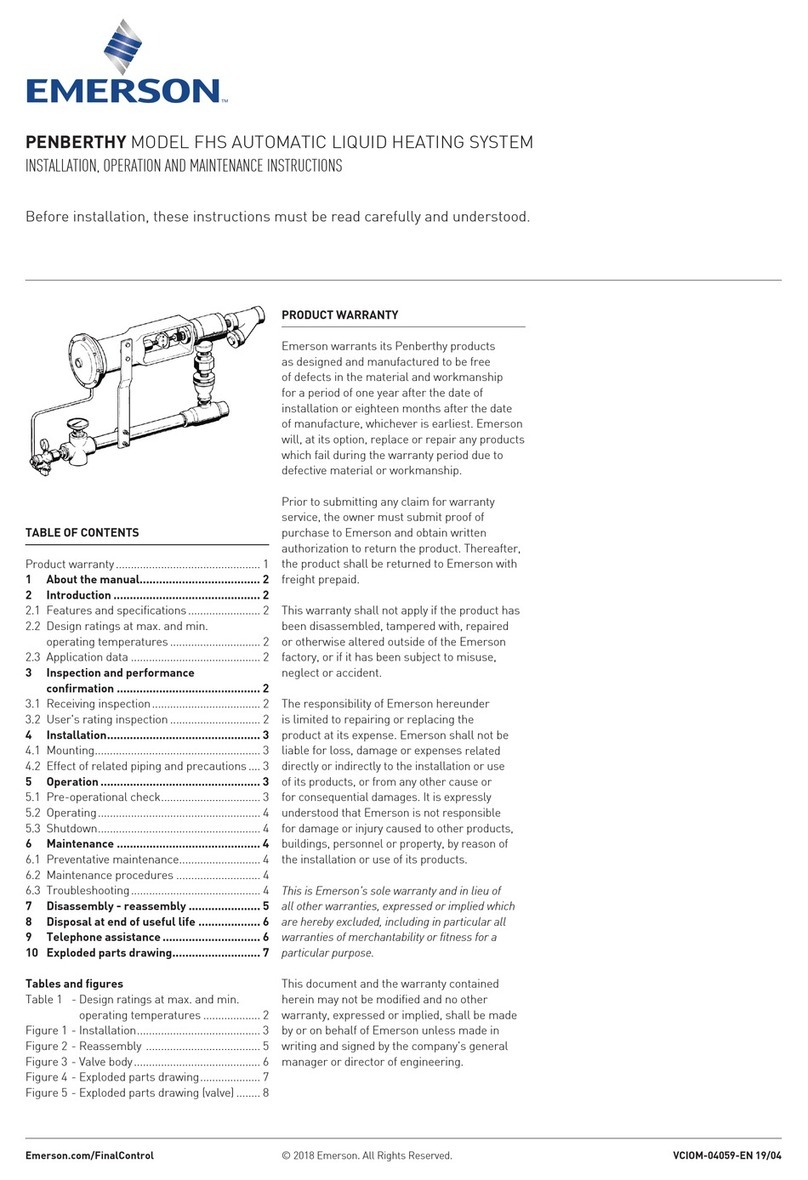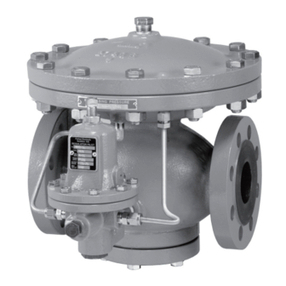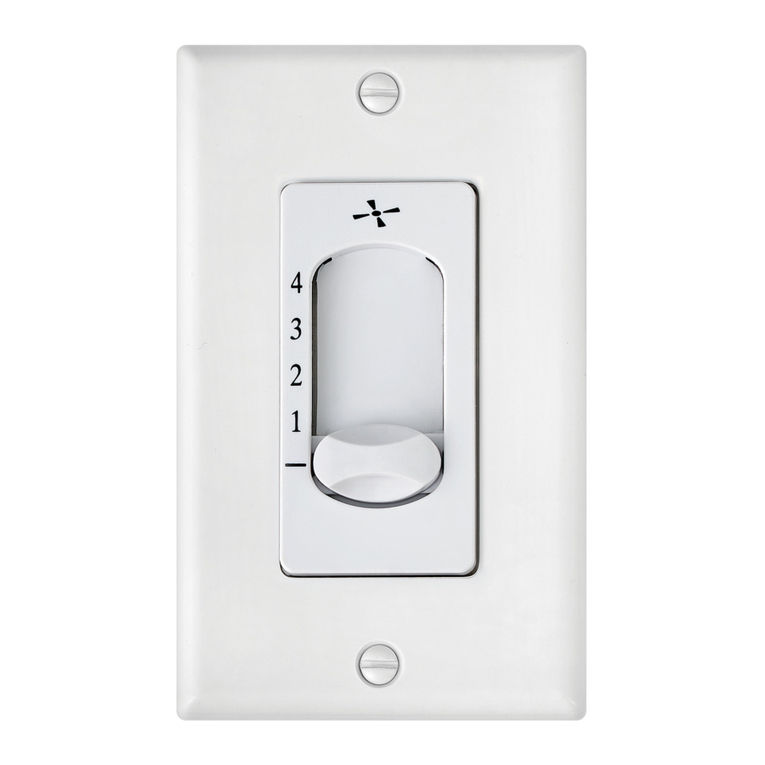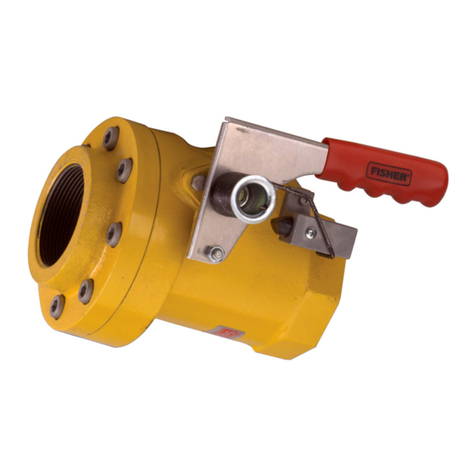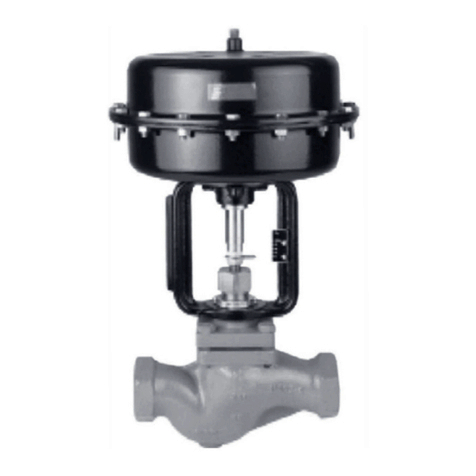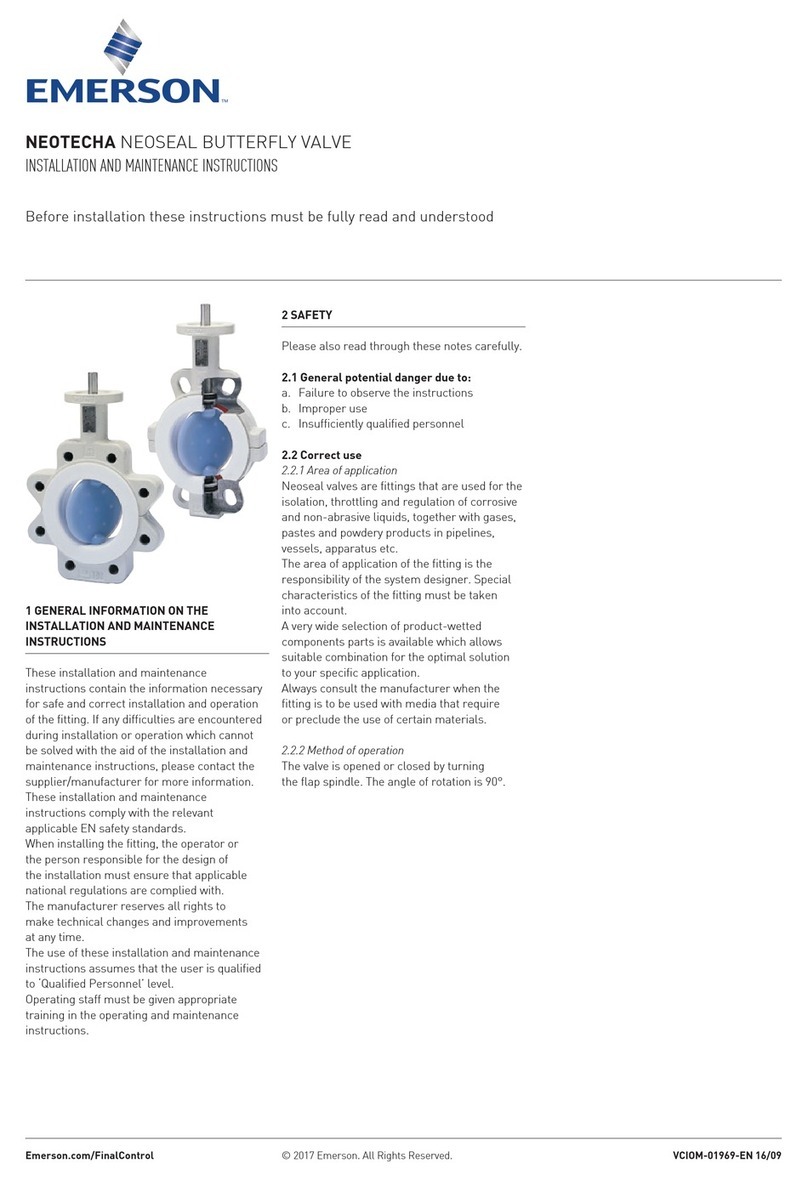Page 2 of 4 All Rights Reserved. IM-IND-553130-RevAA
No. 57, Kundrathur Main Rd., Gerugambakkam, Chennai - 6000128, India www.emerson.com
Figure 1. Valve Body Mounting Dimensions.
Piping
Debrisentering1/8"or1/4"NPTconnection
at top of solenoid may cause valve to malfunction. Use a
muer to vent to atmosphere or connect to main exhaust
system if the air or inert gas cannot be exhausted directly
to the atmosphere.
Connect piping or tubing to valve according to markings on
valve body. Refer to flow diagrams in OPERATION section.
To avoid damage or accidental
disengagement of cartridge assembly from valve body,
hold cartridge assembly securely by wrenching ats when
installing or removing muer or piping at top of solenoid.
Apply pipe compound sparingly to male pipe threads only. If
applied to valve threads, the compound may enter the valve
and cause operational difficulty. Avoid pipe strain by properly
supporting and aligning piping. When tightening the pipe, do
not use valve or solenoid as a lever. Locate wrenches applied to
valve body or piping as close as possible to connection point.
These solenoid valves are intended for
use on clean dry air or inert gas, ltered to 50 micrometres
or better. The dew point of the media should be at least 10
°C (18 °F) below the minimum temperature to which any
portion of the clean air/inert gas system could be exposed
to prevent freezing. If lubricated air is used, the lubricants
must be compatible with Buna N elastomers. Diester
oils may cause operational problems. Instrument air in
compliance with ANSI/I SA Standard S7.3-1975 (R1981)
exceeds the above requirements and is, therefore, an
acceptable media for these valves.
MAINTENANCE
To prevent the possibility of death,
serious injury or property damage, turn· o electrical
power, depressurize valve, and vent uid to a safe area
before servicing the valve .
NOTE: It is not necessary to remove the valve from the pipeline
for repairs. However, piping or tubing must be removed from
pilot exhaust on top of the solenoid if present. See Piping section.
Cleaning
All solenoid valves should be cleaned periodically. The time
between cleanings will vary depending on the medium and
service conditions. In general, if the voltage to the coil is
correct, sluggish valve operation, excessive noise or leakage
will indicate that cleaning is required. In the extreme case, faulty
valve operation will occur and the valve may fail to shift. Clean
filter when cleaning the valve.
Preventive Maintenance
• Keep the medium flowing through the valve as free from
dirt and foreign material as possible.
• Periodic exercise of the valve should be considered
if ambient or fluid conditions are such that corrosion,
elastomer degradation, fluid contamination build up or
other conditions that could impede solenoid valve shifting
CAUTION
CAUTION
CAUTION
WARNING
are possible. In many cases, solenoid valves are periodically
exercised during normal system use or as part of routine
maintenance or surveillance activities and no additional
exercise is necessary. The actual frequency of exercise
necessary will depend on specific operating conditions.
A successful operating history is the best indication of a
proper interval between exercise cycles.
• Depending on the medium and service conditions, periodic
inspection of internal valve parts for damage or excessive
wear is recommended. Thoroughly clean all parts. If parts
are worn or damaged, install a complete ASCO Rebuild Kit.
Causes of Improper Operation
• Incorrect Pressure: Check valve pressure. Pressure to
valve must be within range specified on nameplate.
• Excessive Leakage: Disassemble valve and clean all
parts. If parts are worn or damaged, install a complete
ASCO Rebuild Kit.
Valve Disassembly
1. Disassemble valve in an orderly fashion using exploded
view for identification and placement of parts.
2. Disconnect tubing from valve body and top of solenoid
"A". Then remove tube fitting on adapter with tube fitting
from solenoid "A".
3. Where applicable; remove piping from cartridge assembly
at the top of solenoid ''B". Hold cartridge assembly securely
by wrenching flats, when removing piping.
Notice: Internal parts on solenoid "A" and "B" sides are identical.
4. Remove solenoid, see separate instructions.
5. For low power or intrinsically safe constructions, unscrew
cartridge assembly from valve body. Then remove cartridge
gasket from valve body and orifice gasket from recess in
base of cartridge assembly.
6. For standard construction, unscrew solenoid base sub-
assembly and remove plugnut gasket, solenoid base gasket
and core assembly with core spring and core guide.
7. All parts are now accessible for cleaning or replacement.
If parts are worn or damaged, install a complete
ASCO Rebuild Kit.
Valve Reassembly
1. Lubricate all gaskets with DOW CORNING®200 Fluid
lubricant or an equivalent high-grade silicone fluid lubricant.
2. Proceed as follows:
• For standard construction
A. Install plugnut gasket on solenoid base sub-assembly
and solenoid base gasket in valve body.
B. Install core assembly with core spring and core
guide into solenoid base sub-assembly.
C. Hand thread solenoid base sub-assembly into valve
body. Torque solenoid base sub-assembly to 175 ±
25 in-lbs [19,8 ± 2,8 Nm].
• For Low Power/ or Intrinsically Safe Construction
A. Position cartridge gasket in valve body.
B. Install orifice gasket in recess in base of
cartridge assembly.
C. Hand thread cartridge assembly with orifice gasket
into valve body. Then torque cartridge assembly to
175 ± 25 in-lbs [19,8 ± 2,8 Nm].
3. Install solenoids A and B, see separate instructions.
4. As required, make up tubing and piping to valve body and
top of solenoids A and B.
5. Make electrical connection to solenoid A and B.
To prevent the possibility of death,
serious injury or property damage, check valve for proper
operation before returning to service. Also perform internal
seat and external leakage tests with a non-hazardous, non-
combustible uid.
6. Restore line pressure and electrical power supply to valve.
7. After maintenance is completed, operate the valve a few
times to be sure of proper operation.
WARNING
